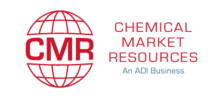The chemical industry must adapt to the inevitable PFAS phase-out
In 1987, the world collectively decided to ban chlorofluorocarbons (CFCs) after discovering their devastating impact on the ozone layer. Despite the industry’s initial concerns about the economic implications, the ban was successful, and the ozone layer is now on the road to recovery. The ongoing debate around “forever chemicals” such as PFAS calls for a…
Details








